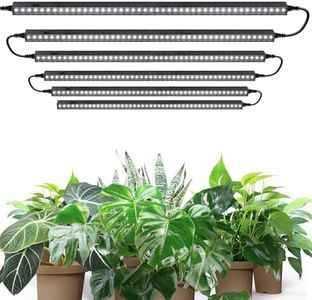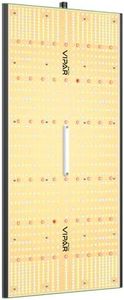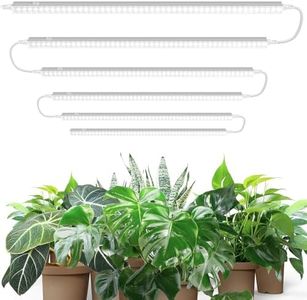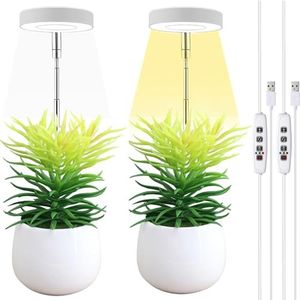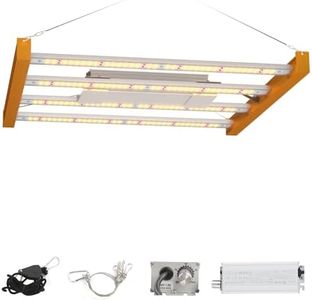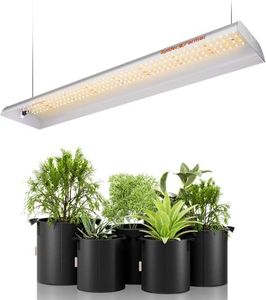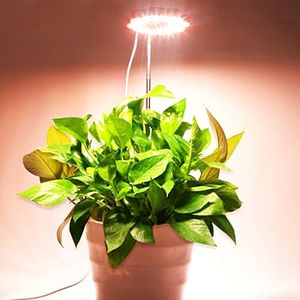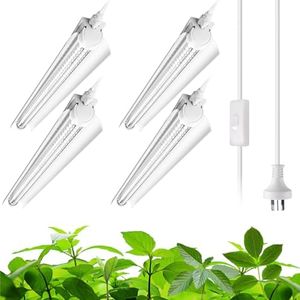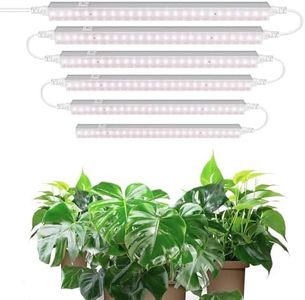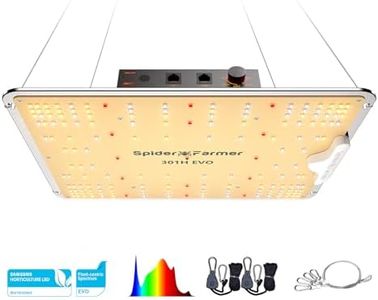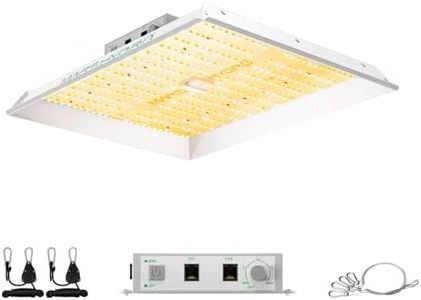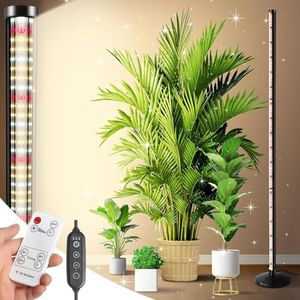We Use CookiesWe use cookies to enhance the security, performance,
functionality and for analytical and promotional activities. By continuing to browse this site you
are agreeing to our privacy policy
10 Best LED Grow Lights
From leading brands and best sellers available on the web.Buying Guide for the Best LED Grow Lights
Choosing the right LED grow light is essential for successful indoor gardening, as it directly affects the health, growth, and yield of your plants. The market offers a wide variety of options, so understanding your plants’ needs and matching them with the right light features will help you achieve optimal results. Think about the type of plants you want to grow, the available growing space, how much maintenance you’re prepared for, and how environmentally friendly or energy-saving you want the setup to be.Light SpectrumThe light spectrum refers to the range of colors (wavelengths) emitted by the grow light. Plants use different parts of the spectrum at various growth stages; for example, blue light supports leafy growth while red light encourages flowering and fruiting. Most LED grow lights offer full spectrum, which means they provide light across all necessary wavelengths, but some are tailored to specific stages. When choosing, consider whether you want a versatile light that can handle all plant stages or one that focuses on either growth or flowering. Pick a full spectrum option if you're growing various plants or want to simplify your setup.
Wattage and Power ConsumptionWattage indicates how much electricity the light uses, while true power matters more than just the advertised wattage. Higher wattage usually covers larger spaces or supports more light-hungry plants, but more isn’t always better for smaller grow areas. If you have a compact space or are growing herbs, low to medium wattage is sufficient, while larger indoor gardens with fruiting plants require medium to high wattage. Base your choice on the size of your grow area and the light requirements of your chosen plants.
Coverage AreaCoverage area tells you how much space the grow light can effectively illuminate. Lights come with recommended coverage sizes, such as 2x2 feet for small tents or 4x4 feet for larger spaces. Look at where and how many plants you’ll grow; for a small shelf setup, a light with a small coverage area is best, whereas for a dedicated grow room, choose a design with a wider range. Always match the coverage area of the light to your intended growing space to ensure all your plants get enough light.
PAR (Photosynthetically Active Radiation)PAR measures the amount of useful light for plant photosynthesis. It’s a more accurate indicator than wattage alone of the light’s effectiveness for growing. Higher PAR is important for high-light plants or for maximum growth and yield, while moderate PAR suits most leafy greens. If you plan on growing light-loving crops or maximizing production, opt for higher PAR ratings; otherwise, a moderate PAR setting suits the average home grower.
Adjustability and DimmingThis feature allows you to change the intensity of the light or switch between light spectrums as your plants grow. Some lights have dimmers or adjustable spectrum settings, which make them versatile for different growth stages. If you want flexibility or plan to grow from seed to harvest under one light, look for models with these features. For simple, single-stage grows, fixed-spectrum lights may suffice.
Heat ManagementHeat management is how well the grow light keeps itself cool. LEDs generally run cooler than other bulb types, but good heat dissipation—such as built-in fans or heat sinks—is important to prevent overheating your plants or shortening the light’s lifespan. For small, enclosed spaces, prioritize lights with efficient cooling technology; for large or well-ventilated areas, heat management is less critical but still beneficial for longevity.
Build Quality and LifespanBuild quality affects reliability, safety, and how long your grow light will last. A well-made LED grow light should last for years and cope with the humidity and conditions of an indoor garden. Look for sturdy materials, good reputation, and ample warranty. This is particularly important if you plan to use the light frequently or leave it running for long hours daily.
